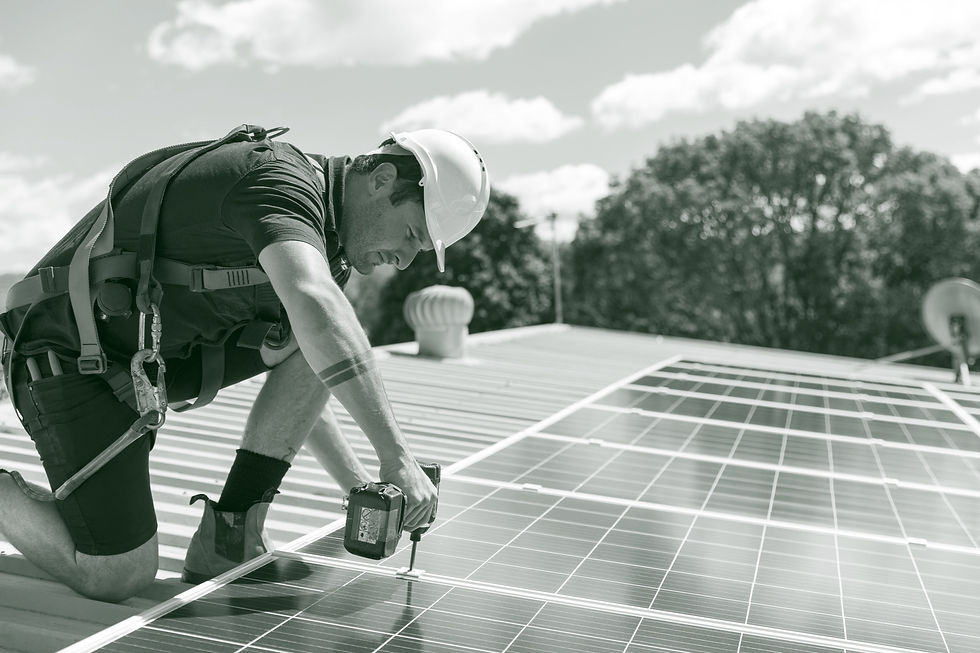Can a novel solar technology bring renewable manufacturing to US shores?
- Jon Shieber
- Apr 20, 2022
- 3 min read

As the U.S. looks to rebuild its manufacturing base after offshoring much of its production, one area that government and private industry are both looking to support is new renewable energy manufacturing.
The climate crisis and a need to drive continued economic growth both play a role here, especially since most of the solar panels that now provide the cheapest source of electricity for much of the world are made in Asia.
Those international sources of solar panels are already creating problems for the renewable energy industry in the U.S., with new restrictions on imports potentially threatening thousands of megawatts -- at least 65% of U.S. solar capacity planned for 2022 and 2023 -- according to a report in Bloomberg News.
That has investors looking to find alternatives within the U.S. and is one reason why several U.S. companies have raised millions of dollars to commercialize new experimental technologies that more efficiently convert sunlight into electricity.
One of these companies, Tandem PV, recently announced $6 million in funding for the development of a pilot plant in California to begin making these new solar panels.
The startup is one of at least six new businesses vying to bring solar manufacturing to the U.S. using a new material called perovskites, which have a unique structure that allows them to conduct electricity from sunlight more efficiently.
Traditional solar panels have efficiencies of around 20%, which means that most of the energy from sunlight is lost when the panels convert that light to electricity. By contrast, solar panels that have both silicon and perovskite can reach 30-40% efficiencies -- generating more power from the same sized modules.
“The cost and performance improvements expected by Tandem PV’s technology will enable substantially higher photovoltaic penetration worldwide, potentially offsetting three gigatons of CO2 equivalent per year,” said Chris Eberspacher, co-founder and Managing Director of Tandem PV, in a statement. “Tandem PV is on a fast track to develop, demonstrate and commercialize perovskite and silicon tandem solar panels for homes across the United States and worldwide.”
Eberspacher, who has been working in senior positions within some of the biggest companies in the solar industry for a long, long time should know.
Alongside his co-founder Colin Bailie, the chief executive of Tandem and one of the original researchers into applications for perovskites in the U.S., the two men are hoping to reignite a solar manufacturing revolution in the U.S. Bailie actually developed the unique design at the heart of Tandem's tech during his doctorate at Stanford University. This solar panel technology is poised to offer 50% higher efficiency than the average solar panel and drive solar system costs down by 30% or more.
They're not alone. Companies like BlueDot Photonics, Cubic PV, and Swift Solar are all U.S. businesses pursuing some variation of perovskite solar development to ensure that more solar panels are made in America.

With additional support for renewable energy manufacturing tied up in Congress, some states are picking up the banner to support these manufacturing efforts.
Chiefly, California is looking to fund advanced manufacturing opportunities for new renewable energy generation. It's part of a multi-billion dollar spending effort from the state to move to entirely renewable energy consumption in the next twenty years.
Now, the perovskite revolution has been promised before. Cubic PV chief executive Frank Van Mierlo projected in 2020 that "multiple gigawatts of tandem will be sold before the end of 2022," according to an article in Canary Media published last year. “In fact, not only do I believe that multiple gigawatts of tandem will be sold before the end of 2022, but I am also confident that in a decade’s time, tandem will command more than 50 percent of our industry’s market share,” Van Mierlo wrote.
For Bailie and others -- including VanMierlo -- the perovskite innovation is one that will require a new kind of supply chain and one that could be distinctly American.
"For the perovskite specifically there is no global supply chain. The raw materials, some of them are made en masse… the forward looking opportunity exists for that entire supply chain for perovskites to be on-shored or at least 'friend-shored'," Bailie says.





Comments